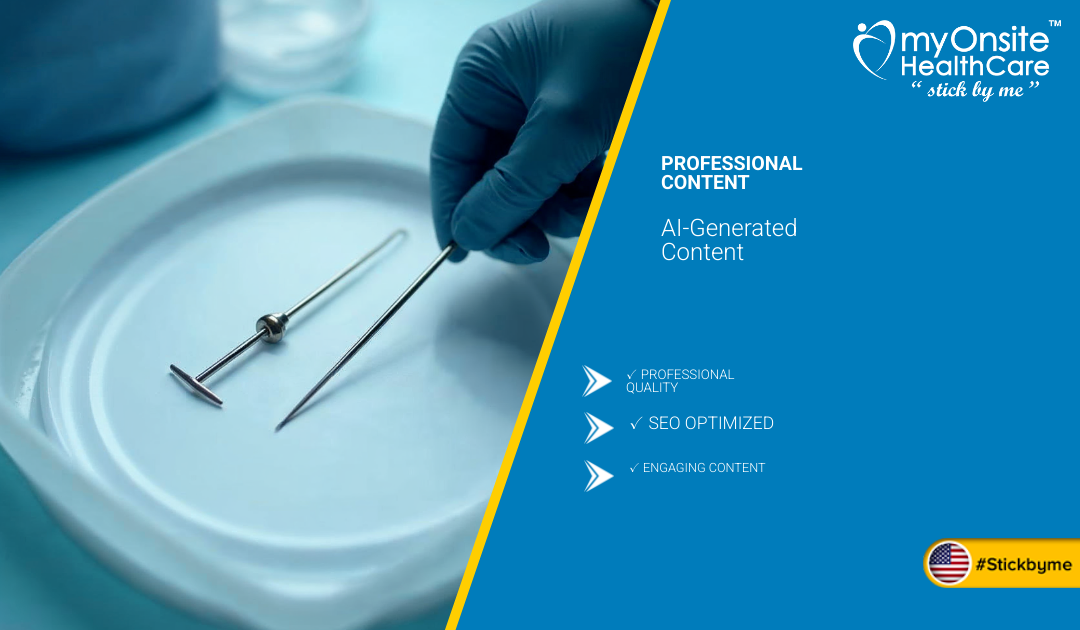Ever had blood drawn and then wondered about the needle they used? I mean, there’s more to those needles than meets the eye, right? Well, turns out there are different types, like butterfly needles and straight needles. Curious to know what sets them apart? Let’s dive in together!
What Are Butterfly Needles?
So, butterfly needles, also called winged infusion sets, are basically your go-to for a gentler blood-drawing experience. Picture this: a smaller needle attached to flexible tubing with little plastic wings on the sides. These wings make it easier for the healthcare provider to handle and insert the needle at just the right angle.
But here’s the kicker – because of their design, butterfly needles are a top choice when dealing with delicate veins or patients who need that extra bit of TLC during blood draws. Think tiny humans like infants or seasoned pros like our elderly folks. These needles are all about minimizing discomfort and reducing the risk of vein trauma.
Why Choose Butterfly Needles?
Here’s why they’re great:
- Gentle on fragile veins
- Better control during insertion
- Reduced patient discomfort
Okay, so now you might be wondering…
What About Straight Needles?
Ah, straight needles – the OGs of blood-drawing tools. These are your longer, thicker needles that connect directly to the collection tube without any fancy tubing involved. They’re quick and efficient for routine draws from those big, juicy veins that are easy to find.
Straight needles are perfect when you need speed and can’t be bothered with all the flexibility jazz. But hey, they might not be everyone’s cup of tea. Folks with dainty veins might find these a tad uncomfortable since they require a bit more finesse during insertion.
The Deal with Straight Needles
Let’s break it down:
- Speedy for quick draws
- Ideal for large-volume collections
- Requires more precision during use
- For delicate veins: Opt for butterfly needles
- Need speed? Go straight with straight needles
Now that we’ve covered the basics, let’s see how these two stack up side by side:
| Feature | Butterfly Needle | Straight Needle |
|————|———————————————-|——————————————|
| Design | Small gauge, flexible tubing, plastic wings | Larger gauge, rigid construction |
| Flexibility| Allows angled insertion and better grip | Direct connection without additional tubing|
| Comfort | Less painful for fragile veins | Quick but may be uncomfortable for some |
| Speed | Slower due to smaller gauge size | Faster for high-volume collections |
| Common uses| Pediatric care, geriatric patients | Routine draws and labs |
| Skill needed| Easier for delicate veins | More precision required |
See how each one has its own strengths depending on the situation? It’s like choosing between comfy slippers or running shoes – different strokes for different folks!
Oh, by the way – at myOnsite Healthcare, we’ve seen a bit of everything when it comes to needle preferences. Our mobile phlebotomists encounter all sorts of scenarios from chemo patients with teeny veins to jittery teens getting their labs done.
Pro Tips:
Now, let’s tackle some burning questions you might have about these nifty tools:
Frequently Asked Questions
1. Are butterfly needles less painful than straight needles?
– Yep! Butterfly needles are known for being gentler on sensitive veins.
2. Which needle is faster for drawing blood in an emergency?
– Straight needles take the cake when speed is essential for urgent collections.
3. Can anyone use butterfly needles at home for self-collection?
– While possible, it’s best left to skilled professionals due to their design.
4. Do butterfly needles cost more than straight needles?
– Generally speaking, butterfly needles might be slightly pricier due to their specialized design.
5. Are there size differences between butterfly and straight needles?
– Absolutely! Butterfly needles typically have smaller gauges compared to straight ones.
6. Can both types of needles be used in pediatric care settings?
– Definitely! Butterfly needles are often preferred in pediatrics due to their gentle nature.
7. Do straight needles always require more skill to use compared to butterfly ones?
– True! Straight needles demand a steadier hand and precise technique during insertion.
8. Are there specific scenarios where straight needles are better suited than butterfly ones?
– For sure! High-volume blood draws or routine lab work often benefit from the efficiency of straight needles.
9. Which needle type is more commonly used in mobile phlebotomy services like myOnsite Healthcare?
– At myOnsite Healthcare, we tailor our needle choice based on individual patient needs but often opt for butterfly needles in delicate vein situations.
10. Can I request a specific needle type if I have a preference during my blood draw appointment?
– Of course! Feel free to discuss your preferences with your healthcare provider before the procedure begins.
And there you have it – everything you wanted to know (and maybe even more) about butterfly vs. straight needles! Remember, whether it’s fluttering butterflies or straightforward choices, picking the right tool can make all the difference in your healthcare journey.

